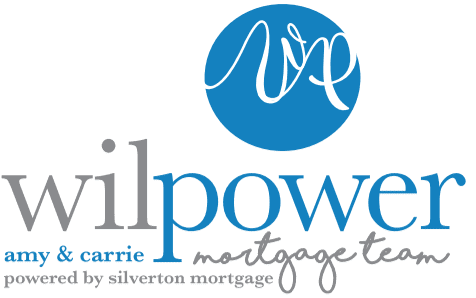What You Need to Know About Home Equity Loans in 2022
Home values in the United States have increased 50.7% since November 2016. So what does that mean for you as a homeowner? Put simply, if you purchased your home a number of years ago, it’s likely your house is worth much more now than what you paid for it.
The even better news? Now could be a great time to tap the newfound equity in your home to fund projects or to help you get ahead financially. Below we explain different ways you can tap the equity in your home. Just keep in mind that this is meant to be a general guide of what
equity is and how different loan programs can help you. Always be sure to consult with your lender about the pros and cons of these programs so that you can find the right program for you.
What is home equity?
In general, home equity refers to the difference between the market value of your home and how much you still owe on your mortgage. The amount of equity in a house will change over time as more payments are made on the mortgage. Fluctuations in the real estate market impact a property’s value which also affects the amount of equity you have in your home at a given time.
How can I use the equity in my home?
Tapping your home’s equity is a fairly easy way to source cash for pretty much whatever you need. And many savvy homeowners are doing just that.
“As long as you’re smart about it, your home’s equity can be a great source of cash to provide you the financial freedom to do pretty much anything you want,” said Carrie Powers, Senior Loan Originator with the Wilpower Team at Silverton Mortgage.
“We’ve worked with homeowners that have utilized the equity in their home to pay off high-interest debt. Many homeowners will tap their equity for home renovations. Some will use home equity to help pay for a child’s wedding or college education. We’ve even worked with a few homeowners who have used the equity in their existing home to help fund a down payment
for a vacation home.”
What is a home equity line of credit
A home equity line of credit (also referred to as a HELOC) somewhat works like a credit card but usually with lower interest rates. With this option, you have a bit more flexibility because you can typically borrow what you need, pay it off, then borrow again. A HELOC can be ideal for homeowners who potentially need access to cash over time.
With a HELOC, you’re borrowing against the available equity in your home (your home’s value minus the amount you owe on your primary mortgage) and using your house as collateral. Much like a credit card, as you pay on the balance, your amount of available credit will increase. You can borrow as much as you need (up to the amount of the credit limit established) throughout the draw period, which is typically 10 years.
After the draw period, you will typically enter into the repayment period, which could result in payments that are higher than what you were making during the draw period.
Most HELOCs have adjustable interest rates and as baseline interest rates go up or down, the interest rate on your HELOC will adjust, as well.
Since a HELOC is similar to a second mortgage, you will risk foreclosure if you cannot pay the loan back under the agreed terms. Like with all loan programs, there are pros and cons of getting a HELOC, so be sure to consult with your lender to weigh your options.
What is a cash-out refinance?
A cash-out refinance is used to provide additional funds without having to take out a second loan. Homeowners can refinance their home for an amount greater than what is currently owed (usually up to the current market value of the home) and then take the difference in cash. This will typically replace your current mortgage with a new one.
With a cash-out refinance, you can use the money for things like:
- Making upgrades to your current home
- Paying for college
- Funding a child’s wedding
- Buying a car
Tips to help maximize the equity in your home
- Make a large down payment. When you initially buy your house, consider making a large down payment. The more you can pay towards your home, the more equity you can typically build.
- Take a short-term mortgage. Mortgages with a shorter term typically have lower interest rates so you pay more on your home and less to the lender. You could also refinance an existing loan to a shorter-term loan. However, shorter terms will typically result in higher monthly payments, so be sure to consult with a licensed loan originator to
weigh your options. - Make improvements to your home. Upgrading your home can be a great way to raise your home’s equity. Exterior improvements can increase the appeal and value of your home. Bathroom or kitchen upgrades are also great options for upgrades that can typically add more value than they cost.
- Pay more on the principal each month. Anything additional you pay toward your loan should go toward the principal balance. Be sure to consult with your loan servicer to make sure the extra money is applied how you want it to.
“In general, the lower the loan balance, the higher the equity you will have in your home,” said Amy Wilemon, Senior Loan Originator with the Silverton Mortgage Wilpower Team. “Having equity in your home offers different opportunities for financial success and often builds wealth in the long run.”
Thinking about buying a house? We can help.
The Wilpower Team with Silverton Mortgage is here to make your home buying process as easy and stress-free as possible. We walk you through the process and stay with you every step of the way.
Contact us today to get started.
By refinancing an existing loan, your total finance charges may increase over the life of the loan.

